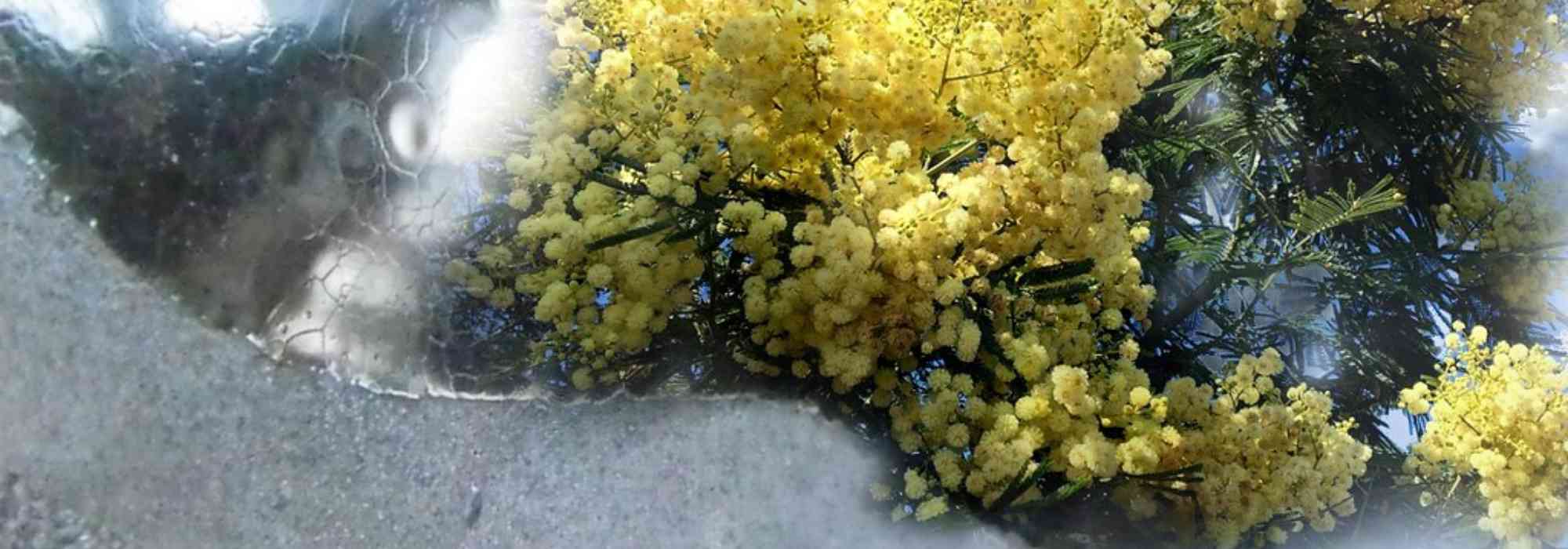
How to protect wattle over winter?
How to protect it from the cold?
Summary
Enjoying the magnificent yellow flowering of wattles (acacias) is a delight in mid-winter, but these small, tender trees of exotic origin dread severe winters, early cold and frosts. Although some mimosas tolerate brief freezes down to -6°C, protecting them effectively proves essential in most regions, when they are not well acclimatised, or when grown in a pot.
Whether it is a wattle established for several years, or conversely a young mimosa newly planted, a grafted or ungrafted mimosa, a mimosa planted in open ground or in a large container, whether you live in Rennes or Collioure… the effects of cold on a plant will be more or less severe.
Mulching, winter fleece, watering… how to prepare your mimosa to best face winter? To avoid compromising their incredible pompom flowering, and to protect them throughout winter, follow our advice and the essential care to give these trees of light!
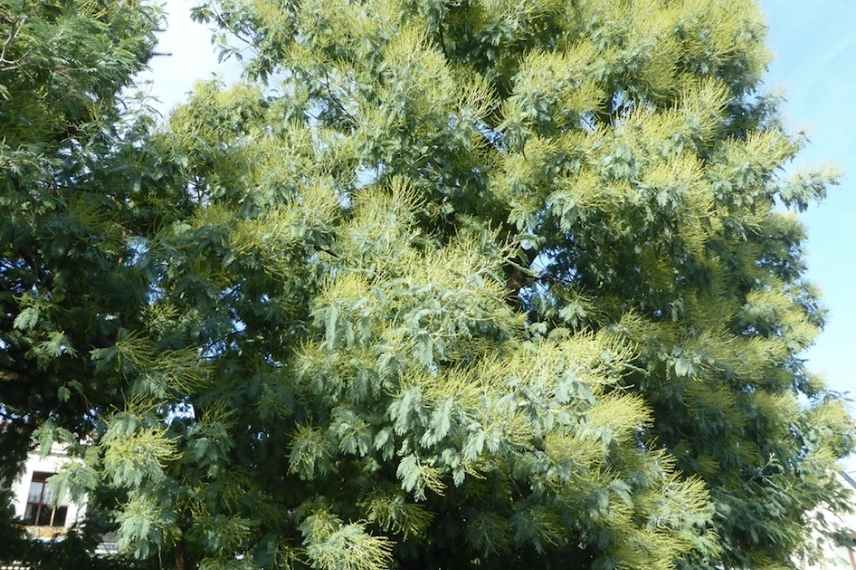
Which wattle are we talking about?
Of the some 1,200 species within the genus Acacia, about thirty are cultivated in France, mainly Acacia dealbata (hardy down to -7°C) and Acacia baileyana (-5°C). They are all hardy: their planting range is limited to the Atlantic coastal fringe (from Cotentin to the Basque Country) and to the Mediterranean. Some tolerate temperatures down to -10°C, including Acacia dealbata ‘Gaulois’ and Acacia recurrens ‘Rustica’, hardy down to -11°C.
It is not always easy to identify which species is present in your garden if you move in and did not plant it. The only clear clue for Acacia retinodes is that it flowers in winter and is perpetual throughout the year: it is the famous four-seasons mimosa. It has single elongated leaves, very different from the compound pinnate foliage of classic mimosas. This one is hardy to -8°C and must be planted in a large container away from the coast.
A young specimen is much more sensitive to cold than an older one: even in mild regions where daytime temperatures rarely fall below freezing, you should protect during the first years bushes whose trunks are still poorly formed.
Note that grafted bushes are less cold-hardy than own-root bushes (from sowing), but most mimosas are grafted to allow them to tolerate calcareous soils.
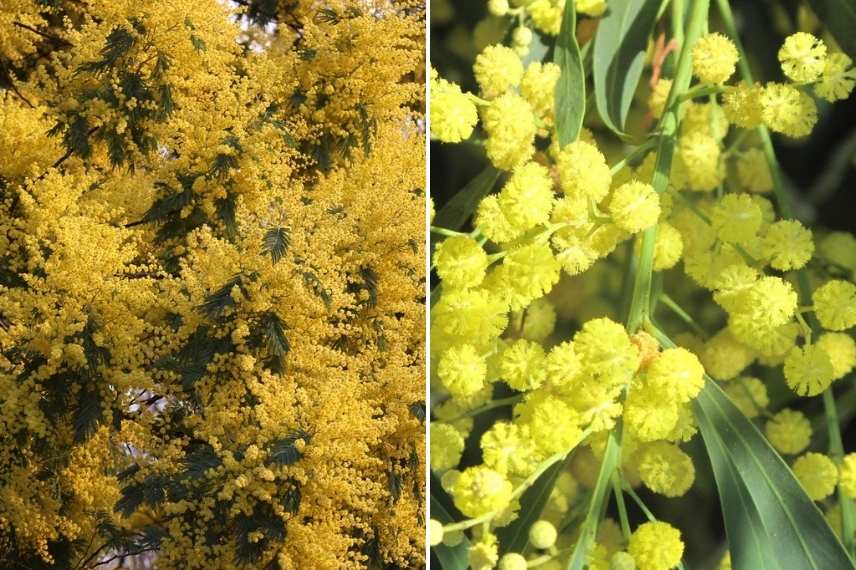
Acacia dealbata (on left) and Acacia retinodes, the four-seasons mimosa (on left), differ in hardiness
You may also read
To grow mimosa in a potIn the open ground
Most acacias dislike limestone and stagnant moisture. If you have planted one in your garden in open ground, it must cope with this trait and be planted in well-drained soil, preferably acidic, in a sunny position and above all sheltered from prevailing winds. It is truly, across all regions, alongside bush age, these soil, exposure and light conditions that will make all the difference during periods of frost. For a one or two degree difference can have very different consequences in the event of frost for a bush outdoors.
In milder regions
On Mediterranean coast and on Atlantic fringe stretching from Cotentin to Basque Country, a mimosa planted in open ground for several years is not troubled by winter, because night-time temperatures rarely fall below 0°C. In particularly severe winters, very brief spells of frost at -5° to -7°C will not be fatal.
In other regions
In other areas (except north-east of France and montane regions, too harsh for mimosas), as first night-time frosts approach, or late autumn in regions where night-time temperature falls below -1°C, it will be imperative to protect your bush!
How to protect your mimosa?
Mulch generously the edge of the planting hole with a mulch of dead leaves and straw, to a depth and width of 40 to 50 cm. It is important that the rootstock, if it is a grafted acacia, be covered by this mulch. This protection will allow mimosa to resprout above the rootstock in the event of a very severe winter.
To contain the leaf mulch, surround it with a ring of wire mesh (chicken wire), or a band of hessian.
If it is a young mimosa planted this year, provide it with a double protection: in addition to the protective mulch, also wrap lower branches with horticultural fleece, in double layer.
Discover other Acacia - Wattle
View All →Available in 1 sizes
Available in 1 sizes
Available in 1 sizes
Available in 2 sizes
Available in 1 sizes
Available in 2 sizes
Available in 1 sizes
Available in 1 sizes
Available in 1 sizes
Available in 1 sizes
Potted
Growing wattles in containers offers many advantages. Not only can you acquire this wonderful tree even if you do not live in one of its favoured regions, but container growing also lets you choose soil that suits it, which may not be that of your garden, namely a non-calcareous, well-drained substrate.
Which type of container?
Small frost-tender shrubs grown in pots are always more frost-tender than their counterparts planted in the ground: even if roots are insulated from cold when container is large enough to surround them with a protective volume of soil, they are never as well insulated as when growing in the ground. Moreover, above-ground parts are particularly exposed to wind and frost. Mimosas, because of their sensitivity to cold, should be planted in large pots or containers. The larger their size (a minimum diameter of 50 cm), the greater the chance of winter protection.
When to bring it in?
It is also important to bring container into shelter at the right time: do not wait for temperatures to fall too far in regions where frosts are severe and early. November is generally ideal month to overwinter your container.
Where to keep it?
Place your mimosa ideally in an unheated greenhouse or in a room that is bright, cool, well-ventilated, frost-free, at around 10°C. On sunny winter days, you can even open greenhouse or conservatory at midday to ventilate fully.
If you do not have a frost-free, well-lit room, you can, only in a south or south-west exposure, in regions where night-time temperatures do not fall below -5°C, place your pot on the terrace, against a wall, in a spot well sheltered from prevailing winds.
How to protect your wattle?
Placed for a few months in a greenhouse or conservatory, your mimosa will not need anything special. You can, however, top up surface with a little potting compost if it is lacking; this will act as a natural insulating layer as well as an amendment.
If you opt for an outdoor installation in a sheltered position, pamper it as much as possible: it is the pot — in reality the roots — that must be chiefly protected: a mulch of dry leaves is a prerequisite for putting it to rest. To this protection add external insulation by wrapping entire container with a coir mat, several turns of reed screening or heather brash, triple-layer hessian, etc. These insulators have advantage of being effective and somewhat more attractive than horticultural fleece.
Anticipate temperatures dropping below -5°C by wrapping aerial parts: position winter fleece taking care to use multiple layers and to close the top properly, without compressing the stems. A hessian cloth can also insulate upper part of the plant. Remember to open coverings at the top on mild days, to ventilate plant and above all to avoid causing condensation around its leaves.
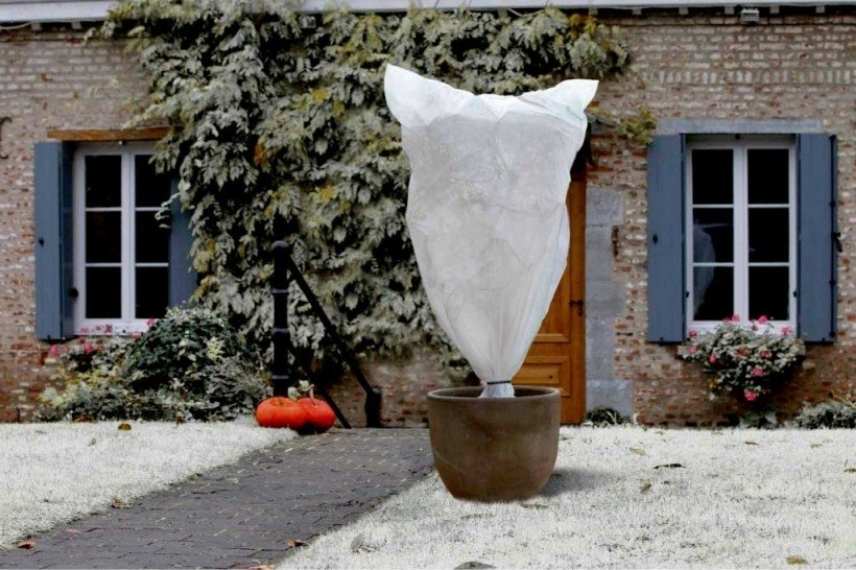
Should you water, prune?
It is important for potted mimosa never to let rootball dry out, especially while in full flowering. Water once a week or as soon as surface appears dry: substrate must remain moist, taking care not to let water stand in saucer if you have one under the pot. You can resume somewhat generous watering in mid-spring.
As for pruning, it is carried out at end of winter, when your mimosa finishes flowering, to preserve a nice habit.
You may also read
Acacia, wattle: planting, pruning and careTo learn more
- Read our article to choose which mimosa to plant in your region
- Subscribe!
- Contents
































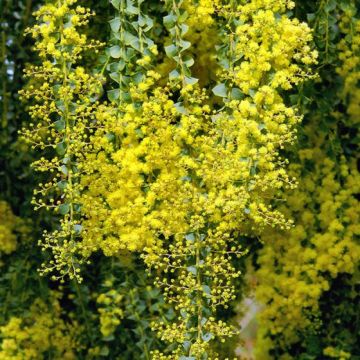
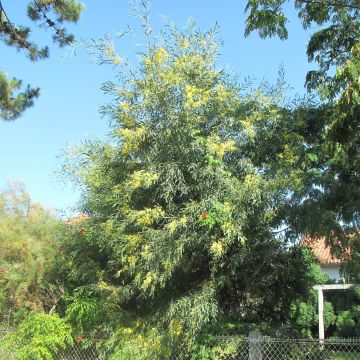
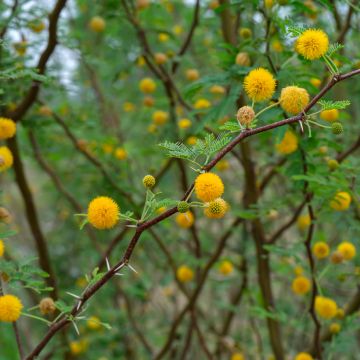
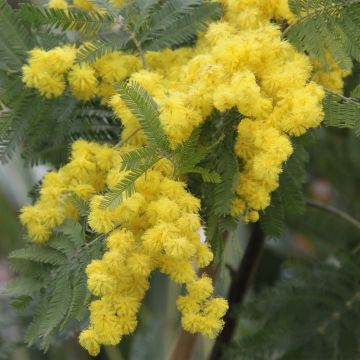
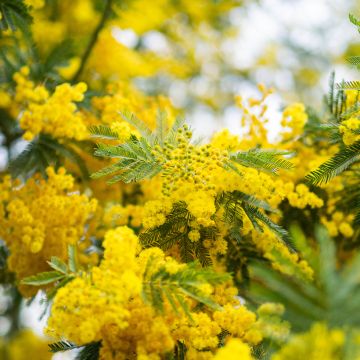
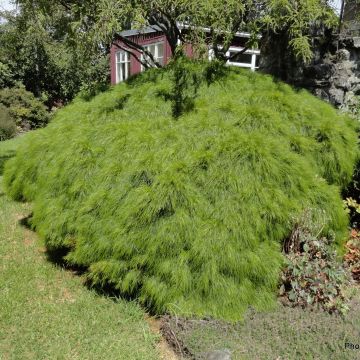
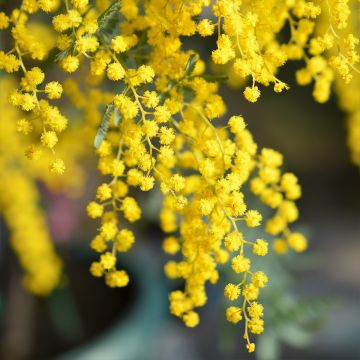
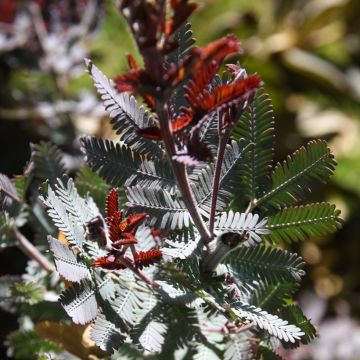
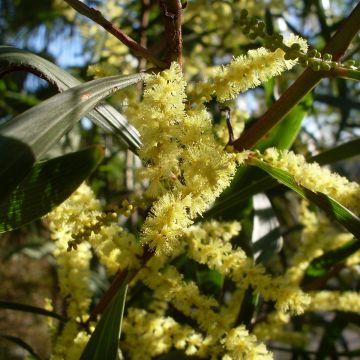
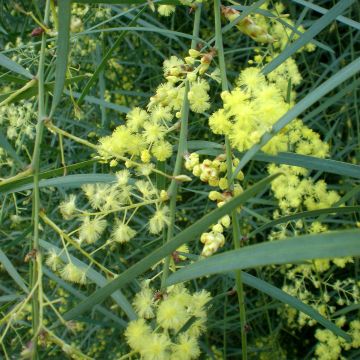
Feedbacks